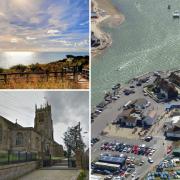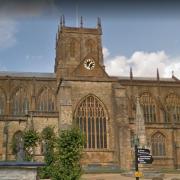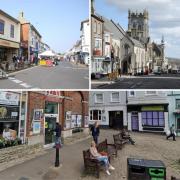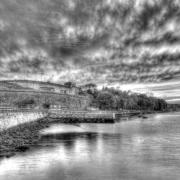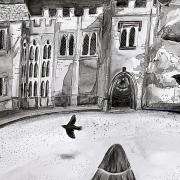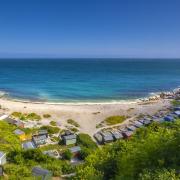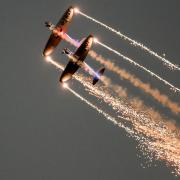Two airship stations in Dorset played a vital role in deterring German U-boats from attacking British ships - and it’s time their story was better known, says Pete London
The summer of 1914 was a time of acute anxiety as millions of people across Europe waited, vainly, for a halt in the slide toward war. During August, following the outbreak of hostilities, the Imperial German Navy put to sea its deadly Unterseebooten, or U-boat submarines.
At first the Germans wielded their submarines against warships but soon, merchant and passenger vessels came under attack too.
Britain’s Admiralty quickly agreed that anti-submarine patrols should use a combination of surface vessels, aircraft, and a network of coastally-based airships, flown by the Royal Naval Air Service (RNAS).
U-boats were easier to spot from the air and airships had great endurance and range, and could also carry bombs. Wireless would allow attacks to be co-ordinated with the Navy’s ships and aircraft. Sites were quickly found for new airship stations; building continued through 1915 and into 1916.
The most vital areas for the airships to cover were the Western Approaches and the English Channel. In July 1915 the RNAS commissioned a major airship station near Polegate in Sussex, and during the following year another at Mullion in Cornwall. By 1917, to guard even wider areas the Admiralty authorised construction of several airship outstations, additional bases commanded by Mullion and Polegate.
Two such sites appeared in Dorset’s countryside: one at Toller Porcorum near Bridport, the other at Upton, close to Poole. Though subordinate to the main stations, the bases’ day-to-day activities were reasonably independent because of the distances between them, though wireless was used to harmonise patrols. Dorset’s outstations were commissioned over the spring of 1918, and typically accommodated two airships.
The Royal Naval Airship Station Toller Porcorum was based at Grays Farm, west of the village and around 8 miles north-east of Bridport. The site was established by a detachment of Mullion’s personnel; mooring-points appeared, huge concrete blocks for the airships to hook onto when at rest, while wooden buildings were erected for equipment. The airships were light and delicate, and when moored high winds could damage them; a clearing was made in the woods north of the farm, to provide a natural shelter. Officers’ billets were found in surrounding villages, while rows of damp bell-tents pitched by the farm buildings provided ratings’ accommodation.
Activity had also begun at Upton near Poole, the site situated on the Llewellin Estate just west of Upton House. Again, airship mooring positions were cut into a wooded area, and accommodation was a mixture of billets and canvas.
Both Toller and Upton operated single-engined Sea Scout Zero (SSZ) Class airships, their great gas-bags over 140 feet long. The SSZ’s gondola, slung below its gas-bag, carried a crew of three. In the nose, a wireless operator also manned a machine-gun; a single pilot sat centrally while aft of him, by the engine, was the mechanic. Powered by a clattering 75 horse power Rolls-Royce Hawk motor, flat-out speed was around 50 mph; usually, two bombs were carried.
The great strength of Dorset’s SSZ patrols was their deterrent value. Dozens of long missions were flown from both Toller and Upton, but the U-boats weren’t easy to find. In good weather a periscope’s wake might be seen, or the shadow of the enemy just below the surface. The submarines sometimes leaked visible traces of oil, or the trail of a discharged torpedo might be spotted. Searching for signs demanded relentless concentration by the airship crews, often for hours at a time. The aeronauts would take food up with them: bacon sandwiches, flasks of tea, even the occasional nip of brandy to keep the cold out.
The patrols’ main purpose was to ensure safe passage of vital shipping to and from Britain. It wasn’t essential to destroy the U-boats, rather to keep them at bay, a point perhaps easier to appreciate in hindsight than at the time. By discouraging the submarines, that goal was achieved. Of course, the airships themselves were highly visible, enough to dampen the spirits of many a U-boat captain; with the threat of being bombed, often attacks were abandoned rather than risking the submarines.
Toller’s airships usually flew between Start Point in Devon, and Portland Bill, while Upton’s patrolled the central English Channel. Most events centred on mechanical failures and accidents rather than offensive actions, partly because of the great lengths of the patrols – sometimes a truly exhausting 20 hours or more, often in freezing wind and rain.
At least four SSZ airships operated from Toller. Sadly, while patrolling on 13 April 1918, SSZ.15 was lost at sea two miles south of Exmouth. In July that same year SSZ.45 crashed during bad weather, around three miles north of the station. The wireless operator, named Owner, was hurled from the gondola and sustained slight injuries. The pilot, Lieutenant Savage, and the mechanic were more seriously hurt. The gallant wireless operator, struggled to the nearest Post Office, but had difficulty persuading the post-mistress to allow him to telephone Toller for help. Eventually the airship was recovered by RNAS trucks. It was repaired, but on 15 August suffered a second forced-landing near Radipole. During October, in another incident SSZ.14 crashed in the woods north of the station.
Despite their mainly reconnaissance duties, one SSZ helped in a rescue after a small Norman Thompson NT.5 flying-boat aircraft from the base at Lee-on-Solent in Hampshire suffered engine failure. The pilot was forced to alight off the Dorset coast, but Toller’s vigilant SSZ.14 spotted the stranded aeroplane drifting on the sea and radioed for help. A destroyer arrived to take the aircrew aboard and towed the flying-boat to safety.
Meanwhile, early in 1918 a new prototype airship had appeared. Designed at Mullion the SSE.2, or Sea Scout Experimental was powered by two Rolls Royce Hawks, and could carry two pilots plus a wireless operator, coxswain and engineer. SSE.2 became the basis for a fresh class of airship, the Sea Scout Twin (SST). Of these, SST.2 served at Toller, beginning its patrols in October 1918.
A further airship type, the giant Coastal Star (C*) Class, was also introduced. The C* was nearly 220 feet long and carried up to four bombs. Notably, parachutes were provided for the five crewmen, a rare concession at that time. Ten Coastal Star airships were built; the final example, C*10, flew numerous missions from Toller.
When, at 11 o’clock on Monday 11 November 1918, the war ended there were scenes of jubilation as crowds gathered in the county’s towns and villages. Airship patrols ended once U-boat commanders at sea had been made aware of the situation. The airships were worn out, and in the following months scrapped.
In the new peacetime world Toller quickly ran down, and it was decommissioned in December 1918. Upton too was de-activated at that time and gradually both outstations were reclaimed by nature, their work all but forgotten. Today only dusty records survive as homage to Dorset’s RNAS airmen, who played such a brave part in the battle to keep Britain’s sea-lanes free of a merciless foe.
--------------------------------------------------
Read on
Katie Adie - women and their vital role in World War OneJames Bond and his secret Dorset pastDorchester’s Great War, the great outdoors and more Dorset news




